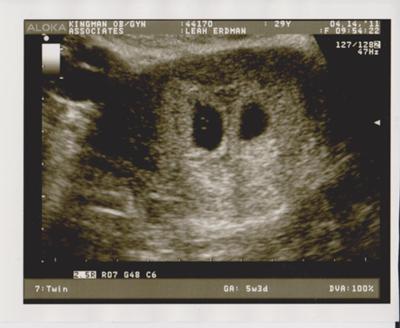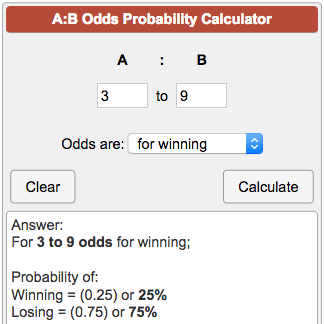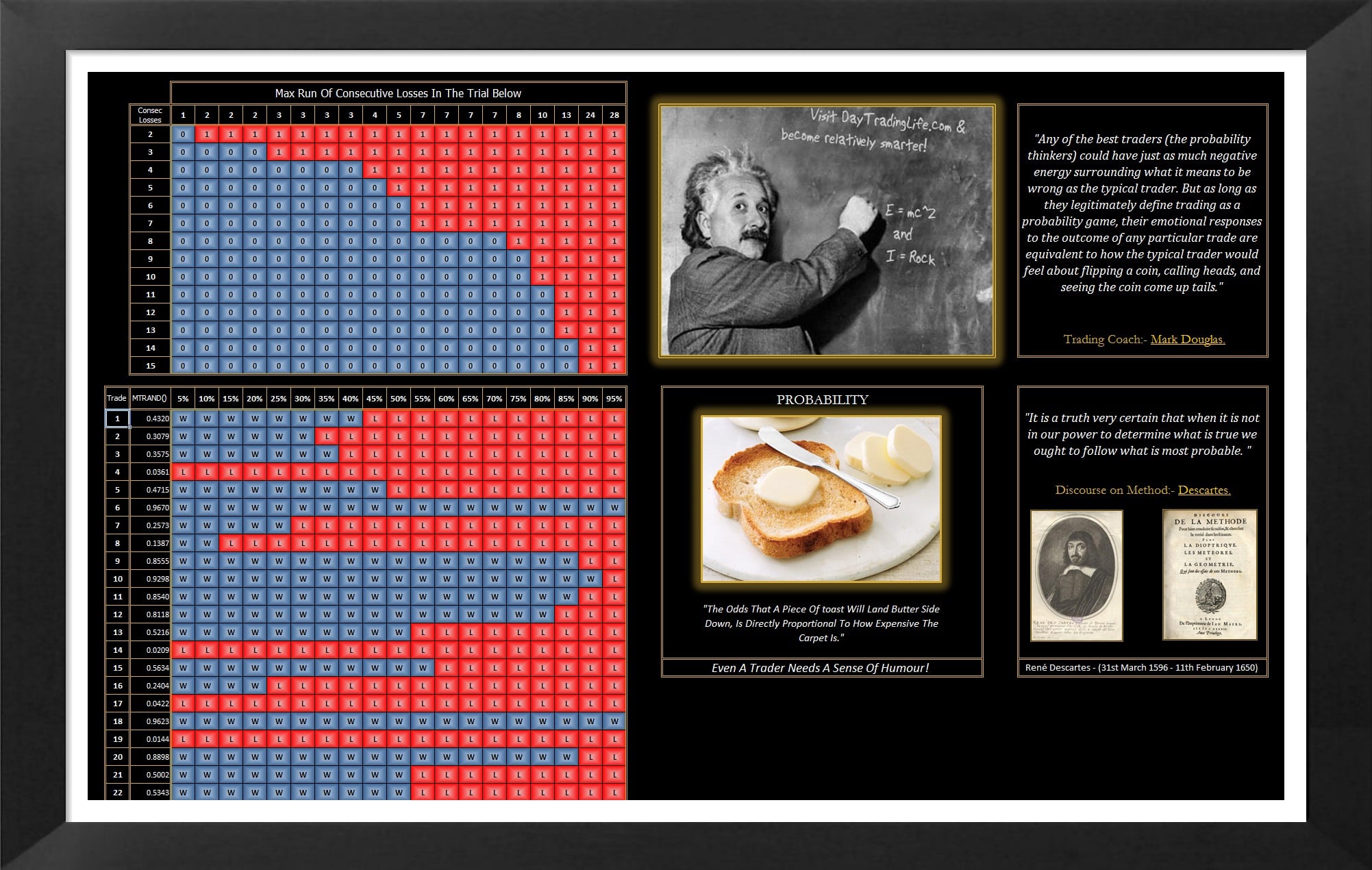1 2 Odds Calculator
By convention only a set of fractions are used in fractional odds betting markets. The set does not include exact mathematical equivalents to all possible decimal and American odds. We use the closet fraction that is used in betting markets.
Negative american odds - Negative 100 divided by (the decimal odds minus one) e.g. A decimal value of 1.2 = -100 / (1.2 - 1) = -500. Also See Betting Calculator - Enter your odds and stake to calculate bet returns for all types of sport wager. As such, a race with 1/1 odds would signify that for every failure, there would be one success, giving you a 50% probability. A 2/1 fraction suggests that for every 2 failures, there’s one chance of success, giving you a 33% probability; 3/2 means a 40% chance, 2/3 works out to 60%, and 10/1. Or for example, if there are 8 equally likely individual outcomes, and 6 of them favor of an event, and 2 are against the event, then the odds for the occurrence of the event are '6 to 2', or '6/2' or simply 3. So, the odds can be any positive number, it does not have to be a number between 0 and 1. The expression that is used to compute the. A 1 in 500 chance of winning, or probability of winning, is entered into this calculator as '1 to 500 Odds are for winning'. You may also see odds reported simply as chance of winning as 500:1. This most likely means '500 to 1 Odds are against winning' which is exactly the same as '1 to 500 Odds are for winning.'
For example, the exact mathematical equivalent of decimal odds 30 is fractional odds 29/1. However 29/1 is not used in betting markets, instead 30/1 is used, so that is what appears in this converter.

For an explanation of the odds types on this table see decimal, fractional and American odds. To find out what the numbers really represent see understand odds as probability with overround.
You may also like

Odds Ratio To Probability Calculator
When a coin is tossed, there lie two possible outcomes i.e head or tail. If two coins are flipped, it can be two heads, two tails, or a head and a tail. The number of possible outcomes gets greater with the increased number of coins. Most coins have probabilities that are nearly equal to 1/2. For instance, flipping an coin 6 times, there are 26, that is 64 coin toss possibility. Calculate the probability of flipping a coin toss sequence with this Coin Toss Probability Calculator.
When a coin is tossed, there lie two possible outcomes i.e head or tail. If two coins are flipped, it can be two heads, two tails, or a head and a tail. The number of possible outcomes gets greater with the increased number of coins. Most coins have probabilities that are nearly equal to 1/2. For instance, flipping an coin 6 times, there are 26, that is 64 coin toss possibility. Calculate the probability of flipping a coin toss sequence with this Coin Toss Probability Calculator.
This Coin toss probability calculator shows the probability of minimum and maximum possibilities of head and tail outcomes.
Related Calculators:
Top Calculators
Popular Calculators
30 To 1 Odds Calculator
